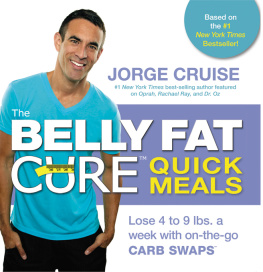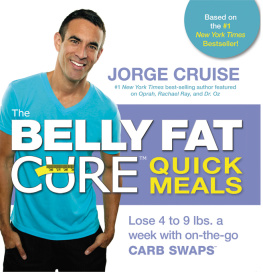


CarTech, Inc.
39966 Grand Avenue
North Branch, MN 55056
Phone: 651-277-1200 or 800-551-4754
Fax: 651-277-1203
www.cartechbooks.com
2014 by Jefferson Bryant
All rights reserved. No part of this publication may be reproduced or utilized in any form or by any means, electronic or mechanical, including photocopying, recording, or by any information storage and retrieval system, without prior permission from the Publisher. All text, photographs, and artwork are the property of the Author unless otherwise noted or credited.
The information in this work is true and complete to the best of our knowledge. However, all information is presented without any guarantee on the part of the Author or Publisher, who also disclaim any liability incurred in connection with the use of the information and any implied warranties of merchantability or fitness for a particular purpose. Readers are responsible for taking suitable and appropriate safety measures when performing any of the operations or activities described in this work.
All trademarks, trade names, model names and numbers, and other product designations referred to herein are the property of their respective owners and are used solely for identification purposes. This work is a publication of CarTech, Inc., and has not been licensed, approved, sponsored, or endorsed by any other person or entity. The Publisher is not associated with any product, service, or vendor mentioned in this book, and does not endorse the products or services of any vendor mentioned in this book.
Edit by Paul Johnson
Layout by Monica Seiberlich
ISBN978-1-61325-182-9
Item No. SA321
Library of Congress Cataloging-in-Publication Data
Bryant, Jefferson.
LS swaps / by Jefferson Bryant.
pages cm
1. General Motors automobiles--Motors--Modification. 2. General Motors automobiles--Parts. 3. General Motors automobiles--Performance. I. Title.
TL215.G4B793 2014
629.25 04--dc23
04--dc23
2013040498
Title Page: Vorshlag Motorsports makes many LS swap kits for BMWs. This one is designed to swap Gen III/IV engines into E36 BMWs (E-series). The kit is available in many stages from bare-bones engine and transmission mounts to everything you need, including headers and driveshaft.
Back Cover Photos
Top Left: A stock harness can be used as-is in the swap, or can be given the wire diet by cutting off the loom and removing the wires that are not needed. This is a great way to get to know the engines wiring in detail. Keeping track of each wire can be a bit of a headache, though.
Top Right: These AN-style lines on the Rock Valley tanks are a little larger than a hose with a clamp. The fuel-sending unit was wired up as well. (Photo Courtesy Street & Performance)
Middle Left: Rather than purchase pre-made motor mounts, Mike Magnuson fabricated a set using 1/8-inch plate steel.
Middle Right: Install the collar on the hose. The hose should be 1/16 inch from the threads on the inside of the collar. Wrap tape around the hose at flush with the base of the collar.
Bottom Left: Bolting the adapters to the engine is pretty simple: four socket head bolts and you are done. Make sure to use some anti-seize compound to prevent galling of the different metals.
Bottom Right: For autocross and road-race applications, you need a well-designed pan to ensure that the engine has a constant supply of oil. This pan fabricated by Canton features a front sump as well, which makes it a good choice for rear-steer vehicles. (Photo Courtesy Blane Burnett)
CONTENTS


Dedication

To my wife and kids, thank you for dealing with all the late nights. This book is for the all of the gearheads, who like me, can never seem to leave well enough alone.

Without the help of the following people, this book would not have been possible: Dr. Jamie Meyer of Chevrolet Performance; Tom Read of GM Powertrain; Tom Henderson of GM Communications; Mark Campbell of Street & Performance; Rick Maechler of Street & Performance; Trent Goodwin of Comp Cams Group; Chris Douglas of Comp Cams Group; Bill Tichenor of Holley Performance; Blane Burnett of Holley Performance; Smitty Smith of Edelbrock; Matt Diamond of Gearhead Garage; Max Wyman of DiabloSport; LS1Tech.com; Doug Strickler; Summit Racing; ATS; AutoKraft; Vorshlag; Magnuson Products; Automedia2000; HP Tuners; Painless Performance; Fred, Kim, and Corey Mufin of Red Line Auto Sports; Ken Wolkens; Mike Magnuson; and Pat McElreath and Clayton Howard of Red Dirt Rodz. All of your hard work is greatly appreciated.


The goal of most engine swaps is to increase performance, and in almost all cases the LS engines meet that goal. The Gen III/IV engine platform represents the largest-growing segment of the performance automotive aftermarket, so there are many options for increasing the performance of an LS-series engine. There are simple bolt-on components such as larger throttle bodies or high-flow intakes, and there are serious performance upgrades such as high-lift camshafts and large-port cylinder heads.
Although the factory fits its high-performance LS engines with superchargers, the most popular big-boost upgrade is adding a turbocharger. Driven off the exhaust rather than the drive belts, a turbo provides free horsepower. A single turbo fitted to the 5.3 Vortec engine can make more than 500 hp with no additional mods, other than a properly calibrated ignition map.
With all of these options, Gen III/IV engine swaps have become more and more popular. This book gives you the knowledge of where to find the engine that best suits your needs and covers all the details of performing the swap. Although every car and swap is different, there are quite a few common aspects.
An LS swapping project is fairly easy if it is carefully conceived, researched, and planned. The Gen III/IV engine families have a similar footprint with the original small-block Chevy. If a traditional small-block Chevy can be swapped into a particular vehicle, you can certainly install an LS engine as well, but some minor adjustments, such as re-arranging the drive pulleys and other components may be required. The possibilities are endless.
Many creative builders have swapped LS engines into everything from Volvos to BMWs to Honda Civics, and even a Honda S2000, which is sure to be a scary ride. Although most builders are familiar with carburetors and how they work, fuel-injection systems, computers, and wiring harness hookups intimidate many swappers. The electronics are an integral component of a swap and a particular car or other vehicle can be adapted to run the engines vital electronic systems. In most cases, the wiring harness, connectors, and wiring must be carefully modified, or the correct aftermarket components for plugging in a particular engine to a specific car can be purchased. Shops such as Street & Performance and Painless Performance provide the products and support to help simplify the wiring harness. Tuning companies such as HP Tuners and EFI Live can reprogram the electronic control module (ECM) to adapt it for a swap. In the end, you get a more efficient power plant for your vehicle, with the ability to tune it better and faster.
Next page










 04--dc23
04--dc23
